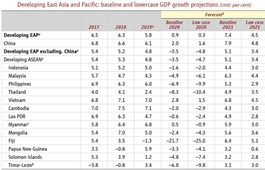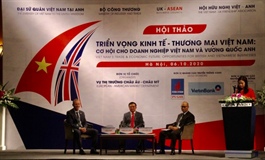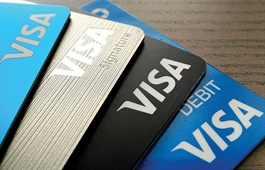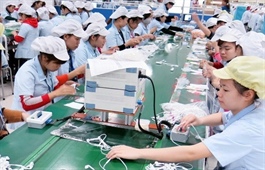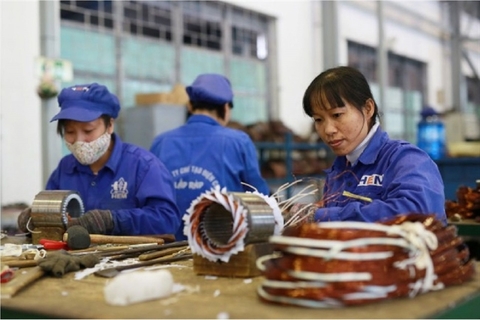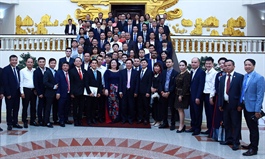EVFTA remains a daunting challenge
EVFTA remains a daunting challenge
Ever since the Europe Vietnam Free Trade Agreement (EVFTA) took effect a month ago, the first positive signs on many Vietnamese exports are now becoming quite visible. Export products such as seafood, rice, and fruits have been well received. However, a much more concerted effort needs to be put in place as all EU non-tariff barriers are not very easy to overcome and still remain a challenge.
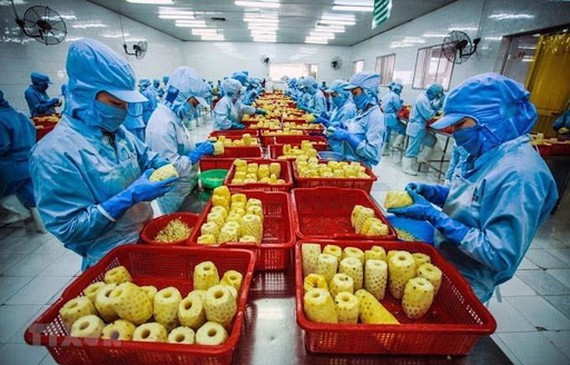 |
First export orders
Some companies are already celebrating their first export orders under EVFTA. Recently, the Ministry of Agriculture and Rural Development held a ceremony at the headquarters of Vina T&T Company in Ben Tre Province to announce the export order of grapefruit, coconut and dragon fruit to the EU market under the new EVFTA. The Dong Dao Company in Gia Lai Province has also exported the first batch of fruits under this agreement.
Among export products to benefit the most from EVFTA in Vietnam will be fruits and vegetables. According to statistics, the export value of Vietnam's fruits and vegetables to the EU market in August was around USD 14.7 mn, up by 25.2% over the previous month and by 6% over the same period in 2019. Many enterprises are now working on speeding up the process of sending goods to the EU market under EVFTA.
Another lucrative export item that will greatly benefit from EVFTA will be shrimp, which already saw an increase in export orders in August by about 15% over the previous month. This is a very positive sign, especially in the current Covid-19 pandemic situation, when demand has fallen worldwide, making the EU market drop to 4th place in the first six months of the year. The EU market is leading in Vietnam's seafood imports and now with the tax advantage, Vietnam shrimp will become highly competitive with other strong contenders like India or Thailand. Moreover, the EU has been one of the four main export markets for Vietnamese shrimp for a very long time, so businesses have not faced many difficulties in meeting the non-tariff barriers for this market. It is forecast that from now until the end of the year, shrimp will continue to maintain a key role in seafood exports, with the industry expected to make a turnover of about USD 8 bn.
The Ministry of Agriculture and Rural Development in coordination with the People's Committee of An Giang province recently held a ceremony to announce the export of the first batch of fragrant rice to the EU market under EVFTA. The first batch of fragrant rice to the EU market is being exported by the Loc Troi Group. The export quantity is about 126 tons of the Jasmine 85 variety, to be packed according to specifications in 18kg packs. Leaders of the Loc Troi Group said that the preferential tax rates of EVFTA are a great competitive advantage in exporting agricultural products to the EU market. The Loc Troi Group is at an advantage because for many years the group has invested in developing standard rice production areas, improved quality control, and prioritized raw material areas, production and processing facilities.
Enterprises unprepared
Although there are many tax advantages being offered under EVFTA, in order to further boost exports to the EU market, many existing problems in Vietnam's export industries must be resolved. For example, where fresh fruits are concerned, the tax has been reduced and the EU need not negotiate on each item, but the criteria for import must be met.
As EU standards are extremely high and require many certifications such as Global GAP and environmental and social certifications, many Vietnamese enterprises find it difficult to meet these standards. This is because Vietnamese growers do not have many standard cultivating areas, and the link between businesses and farmers is still uncoordinated. In addition, to receive a Global GAP certification is expensive for each type of growing area and each type of fruit, and can go upto VND 200 mn per year. This is the reason that despite EVFTA offering several advantages, for fruit growing enterprises to enter this market the first and foremost important stepping stone is to perfect their growing and delivery process.
Rice products too need to overcome several barriers. Firstly when the rice quota is allocated by the EU to the importer, Vietnamese enterprises have to find the right importer. Secondly, in addition to food safety and chemical residue restrictions, EU importers and consumers are also extremely concerned about the environment and sustainable development. These are factors that have not been of great concern for a long time. In particular, to receive a zero percent tax label, there must be a certificate to merit the correct type issued by a competent authority in Vietnam.
The advantages offered under EVFTA are still to be seen in other industries such as textile, leather and footwear. Mr. Pham Xuan Hong, Chairman of the Ho Chi Minh City Textile and Garment Association, says that up to now, very few textile and apparel enterprises have taken advantage of EVFTA. The reason is that the garment industry is in serious shortage of orders due to the pandemic, as consumer demand in major markets such as the US, Europe and Japan has plummeted sharply and drastically, and it is uncertain when the market will recover again.
Mr. Pham Xuan Hong says he is uncertain of the export orders from now until the end of the years as some businesses are currently receiving orders every week, while others are even seeing cancellations of existing orders. The expected turnover of USD 40 bn may now even drop to only USD 30 bn. Mr. Hong also feels it is too difficult to handle additional orders under EVFTA because of many strict standard rules of origin. Businesses cannot currently pay too much attention to EVFTA at this time and the only hope is that businesses survive through this pandemic and only when recovery is fully underway they will consider competing and taking advantage of what EVFTA has to offer.






